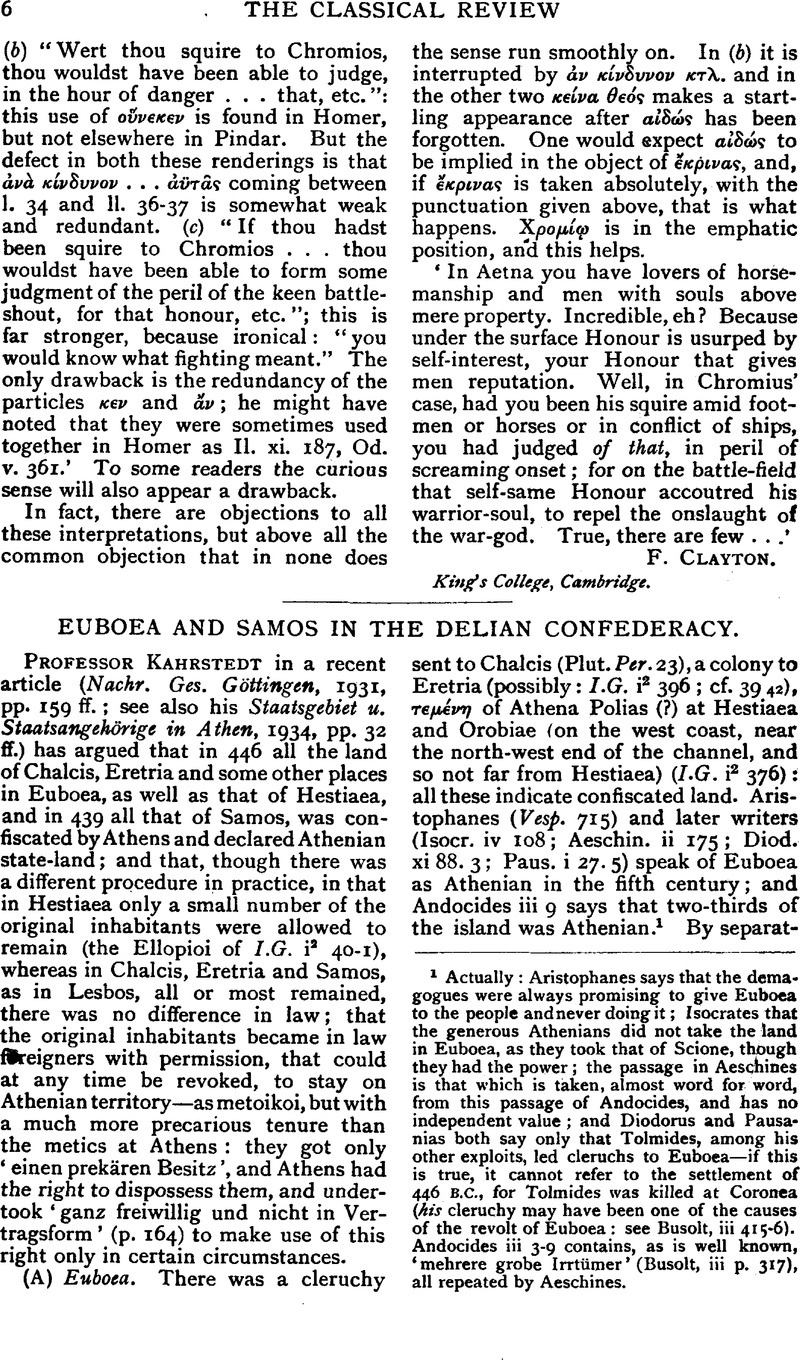Article contents
Euboea and Samos in the Delian Confederacy
Published online by Cambridge University Press: 27 October 2009
Abstract

- Type
- Review Article
- Information
- Copyright
- Copyright © The Classical Association 1936
References
page 6 note 1 Actually: Aristophanes says that the demagogues were always promising to give Euboea to the people and never doing it; Isocrates that the generous Athenians did not take the land in Euboea, as they took that of Scione, though they had the power; the passage in Aeschines is that which is taken, almost word for word, from this passage of Andocides, and has no independent value; and Diodorus and Pausanias both say only that Tolmides, among his other exploits, led cleruchs to Euboea—if this is true, it cannot refer to the settlement of 446 B.C., for Tolmides was killed at Coronea (his cleruchy may have been one of the causes of the revolt of Euboea: see Busolt, iii 415–6). Andocides iii 3–9 contains, as is well known, ‘mehrere grobe Irrtümer’ (Busolt, iii p. 317), all repeated by Aeschines.
page 7 note 1 Kahrstedt will not allow that there were any Athenian settlers in Mytilene: the cleruchs drew their rents in Athens; principally because Athens could not afford to lose any man of military age (Staatsgebiet, p. 38). On the contrary, Athens would be glad to convert many thetes into hoplites, and have a garrison in Lesbos. This was worth more to them at the time than the tribute. See Tod's comments (Greek Hist. Inscr., p. 136).
page 7 note 2 Kahrstedt rejects Davis' restoration of I.G. i2 60 (A.J.A. 1926, 177–9); but at least the grant of autonomy to Mytilene, at the same time as the regulations of the settlers' rights, seems to be certain.
page 8 note 1 Antiphon, v 47, does not contradict this view.
page 8 note 2 The lettering of one of these is, according to Schede (Ath. Mitt. xliv. 2–3), more like that of the first half of the fifth century, some time before 439; the other Schede would put in 411–04, the period of full autonomy. These points Kahrstedt does not discuss. A similar inscription from Carpathos, which he cites, is now dated by Dinsmoor in 394–3 or 377–6 B.C. (A.J.A. 1932, 155–160).
page 9 note 1 Samos was in fact treated in 439 in a much more generous spirit than other allies who had revolted (unless the reparations were excessively heavy), for she paid no tribute (Meritt and West, The Athenian Assessment of 425 B.C., p. 69), and later an oligarchic government was allowed. It is wrong to think of Athenian policy towards the cities as having been all of a piece, and her organization of the empire as everywhere systematic. The treatment of Mytilene too, to judge from I.G. i2 60, was milder than one would have guessed from Thucydides alone.
- 1
- Cited by


